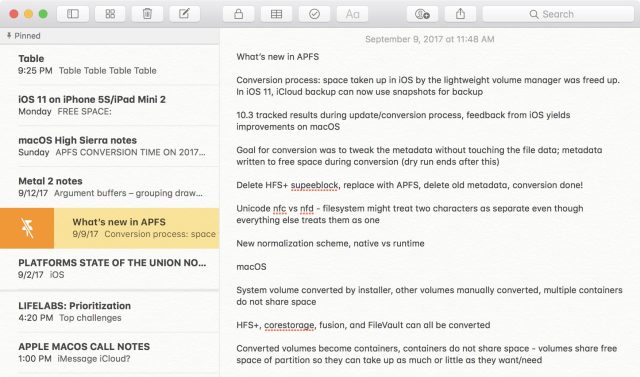

- #LIGHTWRIGHT 6 AND OS HIGH SIERRA HOW TO#
- #LIGHTWRIGHT 6 AND OS HIGH SIERRA INSTALL#
- #LIGHTWRIGHT 6 AND OS HIGH SIERRA UPDATE#
- #LIGHTWRIGHT 6 AND OS HIGH SIERRA UPGRADE#
- #LIGHTWRIGHT 6 AND OS HIGH SIERRA SOFTWARE#
Many users are familiar with dark mode from mobile apps, so they’ll be happy to see this option available. It’s particularly helpful for anyone who does a lot of work late at night or in a darkened room. Many users like dark mode because it reduces eye strain. Dark Mode now applies to every feature of every app, across the system.
#LIGHTWRIGHT 6 AND OS HIGH SIERRA SOFTWARE#
Even some of Apple’s own software defies dark mode and remains bright on the screen. In High Sierra, the best you can get is a “dark” menu bar.
#LIGHTWRIGHT 6 AND OS HIGH SIERRA HOW TO#
If you’re using Sierra or High Sierra, you can get more info about how to use Night Shift. Sierra called it “Night Shift.” High Sierra also included a Dark Mode, but users were less than impressed. A True Dark Mode With Mojaveĭark Mode was first introduced in macOS El Capitan. If you’re using an older version of the OS, these apps won’t be available to you. Some iOS apps, like News, made their way to macOS with Mojave. Mojave introduced a feature that allows you to choose your iPhone as a method of “content capture” while you’re working on your Mac. High Sierra, for example, allows your Messages history to be kept in sync across devices. Mojave continued the trend toward “iPadification.” More iOS apps made their way to macOS, as well as features. If you want to keep running 32-bit apps without issue, though, High Sierra is your best bet. Still, Mojave will run 32-bit apps, unlike Catalina.
Functionality may be reduced or you may notice the app crashes a lot. So, while a 32-bit app will still run on Mojave, it might act a bit strange. With Mojave, Apple said they were no longer supporting 32-bit apps without compromise. True APFS functionality for fusion drives didn’t arrive until Mojave rolled out, though.Īnother key difference between the two versions is support for 32-bit apps. It also makes the process of copying files faster, among other things. Apple had introduced it to mobile devices since it can help save space.

It changes the way your computer organizes data. It also refines the Apple File System, or APFS, that Apple introduced with High Sierra.ĪPFS replaces the old Hierarchical File System (HFS+). It refines Dark Mode, taking it further than High Sierra did. Like other updates to OS X, Mojave builds on what its predecessors have done. The two have a lot in common, unlike Mojave and the more recent Catalina. When it comes to macOS versions, Mojave and High Sierra are very comparable. So, which is better? This guide will help you compare the two. High Sierra is the version before that, which builds on Sierra. Mojave is the second-most recent version of OS X, and the last one to have support for 32-bit apps.

Many people wonder about High Sierra vs Mojave. Most machines are compatible with several versions, so you can choose. Of course, the question for almost any Mac user is which version of OS X is best. Some were revolutionary, while others have stayed the course. Since then, there have been 15 different versions of OS X. I'm probably going to end up going to fusion soon w/ me logged into the console 100% of the time to keep the vms running if I cannot figure something out.It’s been 20 years since macOS X first arrived. Might be something going on there with APFS. The 10.12 ISO sees the internal disk, but with 0 partitions, and lists it as "unformatted". At this point I boot from a 10.12 installation iso to open disk-utility and see what the status is of the disk.
#LIGHTWRIGHT 6 AND OS HIGH SIERRA UPGRADE#
When I run an upgrade of the OS from 10.12.6 to 10.13 the system eventually gets to a reboot where it cannot find any boot disks and gives me the standard vmware blue ansi boot menu. Booting from 10.13 installation iso I still cannot see the virtual disks.
#LIGHTWRIGHT 6 AND OS HIGH SIERRA UPDATE#
I'm not sure what the difference is between 6.0 and 6.5, but something is very wrong here.Īnyway, worse luck with 10.13 after the bios update and ESXi upgrade. Even a copy of a 5gb file from an SMB share brings it to its knees with the guest responding to key-presses intermittently and the host web interface taking 5-10 seconds to fill in information when navigating around. Once I take a snap it keeps giving me the pin-wheel ever few seconds. 1vm running on the host with macos 10.12.6 with a thick provisioned disk runs fine without a snapshot. On a host with a 1tb SSD, 32gb of ram, 12core processor, it should be fine. Performance is TERRIBLE now when a VM has a snapshot. Yay apple! Prior to the wipe I had 1 vm that I was able to upgrade to 10.13 without issue.Īfter updating the bios I wiped the internal SSD and installed ESXi 6.5 u1 w/ the October update.
#LIGHTWRIGHT 6 AND OS HIGH SIERRA INSTALL#
I found that I had to wipe ESXi completely off the system to install OSX 10.9 on the internal disk of the system because that is the only place and OS that the bios update for this system would run from.


 0 kommentar(er)
0 kommentar(er)
